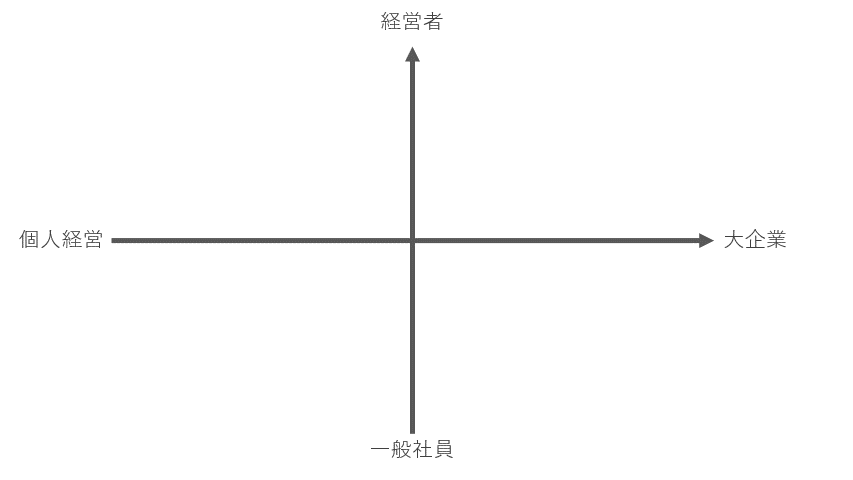
【思考法】サラリーマン×改善サイクル
『あなたは見てはいるが、観察していないのだ。』
アーサー・コナン・ドイル(1859~1930)
まえがき
世の中には様々な改善サイクルがある。
ビジネス書でもネットでも、誰もがどこかしらで何かしら目にしたことがあるだろう。
そして思う。
“結局どれがええねん“
今回はサラリーマン×改善サイクルと題して、“サラリーマンにとっての有用な業務改善アプローチ”を紹介する。
もう一度言うが、今回の話はサラリーマン向け。これが前提だ。

経営者のポジションと、雇われのポジションでは、仕事の質も裁量もまるで違う。
平社員がどんなにいい案を思いついても、実行の決裁権がないだろう。
細かいことを言えば、大企業と小企業でも人一人の裁量はぜんぜん違うだろうから、正確には“大企業の一般サラリーマン向け”だ。
シャッチョさんやジューヤクさんたちには当てはまらない。
ちなみに今回は、誰でもわかるようなるべく簡潔に説明する。
ざっくりとしていて説明足らずな部分も大いにあろうがその点はご容赦いただきたい。
STPDとは?
さて本題に入ろう。
1つ目のフレームワークは、STPDサイクル。
いきなり結論を言うと、MAACoのおすすめはこれだ。

現状をよく観察することから始め、あるべき姿とのギャップを捉え解決の仮説を立てる。
そのためにはいつ、何をすればよいかを細かく言語化、スケジュールを立て、あとはプランに従って実行する。
その状況を更に観察し・・・と2巡目に入っていく。
OODAとは?
2つ目に、計画のステップがないOODAループ。改善の速度が速く、現代の早い変化に対応できる点が強みだが我ら庶民には難易度が高い。

客観的に観察、理解し、速やかに次の最適解を導けなくてはならない為、言葉を選ばず言えば馬鹿がこれをやると悲惨なことになる。
ただただ直感的にその場しのぎをしているだけになりかねず、そもそもの特性として組織的連携や長期的な改善に向かない。
使いこなすにはDECIDEを下支えする多岐にわたるリテラシーが必要になる。
これが有用な例をあげるなら、アスリート達はOODAのプロだ。
瞬間的に状況を判断し、行動に移す。
試合中にPLAN(計画)なんて練っていたらその間に攻め入られて試合終了だろう。
直感的判断力が論理的思考力を大きく上回るメリットを持つケースだ。
アスリートが論理的思考力を必要とするのは、肉体改造や基礎練習など基盤を作る時であり、その際は他のサイクルを用いる。
PDCAとは?
最後に、PDCAサイクル。おそらくいちばん有名なフレームワークだろう。

計画を立て、まずはやってみる。問題点を整理し、改善し再度やってみる。
もっともわかりやすくシンプルな業務改善サイクルだ。
いかに有名であっても、PDCAはベースとしては推せない。
これにはちゃんと理由がある。
決定的な違い
OODAにはPLANがないというわかりやすい特徴があったが、STPDとPDCAは順序こそ違うが似ていると感じたと思う。
その通り、MAACoの解釈としても、STPDサイクルもPDCAサイクルも2巡目以降に入ってしまえばほぼ同じだ。
STPDSTPDST・・・と続く2巡目以降のSEE(見る)とTHINK(考える)は、PDCAにおけるCHECK(進捗を見る)とACT(対策を考える)の役割と完全に同義だからだ。

しかし1巡目においては、PLANが生まれる思考プロセスが”思いつき”なのか、”現状の問題からの逆算”なのかという点に決定的な違いがある。
この1巡目の違いこそが、MAACoがSTPDを勧める理由だ。
SEEから始めよ
話は戻るが、平社員がどんなにいいジャストアイデアを出しても、実行の決裁権はないのだ。
決裁権がない人間が、自身の置かれた状況を鑑みることなくPLAN(計画)から入るのはおかしい。
SEE(見る)THINK(考える)とは、改善対象だけでなく、自身に与えられている裁量や力の及ぶ範囲も含めてSEE(見る)でありTHINK(考える)なのだ。
これを見誤り、取り組みのベクトルと強度の目測をはずすとPLAN(計画)もDO(行動)も無駄骨になってしまう。
日本の大企業のサラリーマンは強く守られていると同時に、強い縛りの中で結果が求められるという点ではベンチャー企業や個人経営より取り組み条件が厳しい側面もある。
そんな環境下で最大の成果を上げるには、SEE(見る)の能力を鍛えることが欠かせないだろう。
Rethink MAACo
#ビジネス #サラリーマン #思考法 #×カケル #Rethink #MAACo
[The text below is an English translation generated by chatGPT.
I am not responsible for the accuracy of the information provided by this translation.]
This article is available for a fee, but you can read it for free. Only the original data (pptx file) of the GIF images used in this article are sold for a fee.
"You see, but you do not observe." - Arthur Conan Doyle (1859-1930)
Target Audience of this Article
There are various improvement cycles in the world. Whether in business books or online, everyone has seen something somewhere.
And they think.
"After all, which one is good?"
This time, under the theme of "Salaryman × Improvement Cycle," we introduce "useful business improvement approaches for salarymen."
Again, this story is for salarymen. That's the premise.
Who Should Read This Article
The quality and discretion of work are completely different between the position of management and that of an employee. No matter how good ideas an ordinary employee comes up with, they probably don't have the authority to execute them.
To be precise, the discretion of one person may differ greatly between large and small companies, so it is more accurately described as "for general salarymen in large companies."
This does not apply to managers or executives.
By the way, this time, I'll try to explain as simply as possible so that anyone can understand. There may be parts that are too rough or insufficiently explained, but please forgive me for that.
What is STPD?
Now let's get to the main point. The first framework is the STPD cycle. To put it bluntly, this is MAACo's recommendation.
It starts with observing the current situation well, capturing the gap between the current situation and the ideal state, and formulating hypotheses for solutions. For this purpose, it is necessary to articulate in detail what to do when, make a schedule, and then execute according to the plan. Then, enter the second round of observation and ...
What is OODA?
Secondly, there is the OODA loop without a step of planning. It is strong in its ability to respond to rapid changes in the modern world, but it is difficult for us ordinary people.
Since it is necessary to objectively observe, understand, and promptly deduce the next optimal solution, it would be disastrous if fools were to do this without choosing their words. It could end up being nothing more than making ad-hoc judgments intuitively, which is not suitable for organizational coordination or long-term improvement. To master it, a wide range of literacies supporting DECIDE are necessary.
If we were to give a useful example, athletes are pros at OODA. They judge the situation instantly and act on it. If they were to plan during the match, they would be attacked and the game would be over. This case has the merit that intuitive judgment surpasses logical thinking. Athletes need logical thinking when building foundations such as physical transformation or basic training, and at that time, they use other cycles.
What is PDCA?
Finally, the PDCA cycle. It's probably the most famous framework.
Make a plan, try it out first. Organize the problems, improve them, and try again. It's the simplest and most understandable business improvement cycle. Even though it is famous, PDCA cannot be recommended as a base. There is a good reason for this.
Decisive Difference
OODA had the clear feature of no PLAN, but STPD and PDCA felt similar despite having different orders. Indeed, as an interpretation of MAACo, once you enter the second round of STPD or PDCA cycle, they are almost the same. The SEE (observe) and THINK (consider) in the second round and later of STPD, which continues as STPDSTPDST..., are completely synonymous with CHECK (check progress) and ACT (consider countermeasures) in PDCA.
Differences and Commonalities between STPD and PDCA
However, in the first round, there is a decisive difference in whether the thought process that gives birth to PLAN is a "sudden idea" or a "back calculation from the current problem." This difference in the first round is why MAACo recommends STPD.
Start with SEE
Going back to the story, even if an ordinary employee comes up with a good idea, they don't have the authority to execute it. It's strange for someone without the authority to proceed from PLAN (plan) without considering the situation they are in. SEE (observe) and THINK (consider) are not only about improving the target, but also about SEEing (observing) and THINKing (considering) the discretion and scope of power given to oneself. If you misinterpret this and misjudge the direction and intensity of your efforts, both PLAN (plan) and DO (action) will be wasted.
Japanese corporate employees are strongly protected, but at the same time, there are aspects where the conditions for engagement are stricter than those for venture companies or individual management, where results are demanded under strong restrictions.
To achieve maximum results in such an environment, it is essential to develop the ability to SEE (observe).
Rethink MAACo
いつか誰かのためになる。 そんな好循環を夢見て活動しています。 お力添えをよろしくお願いしますm(_ _)m
